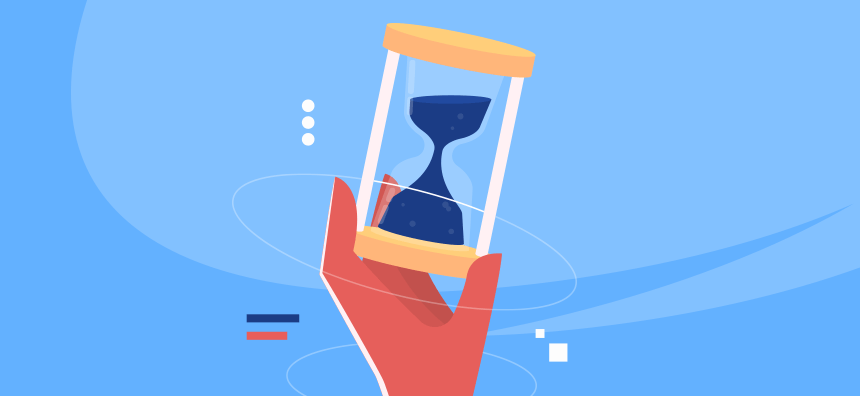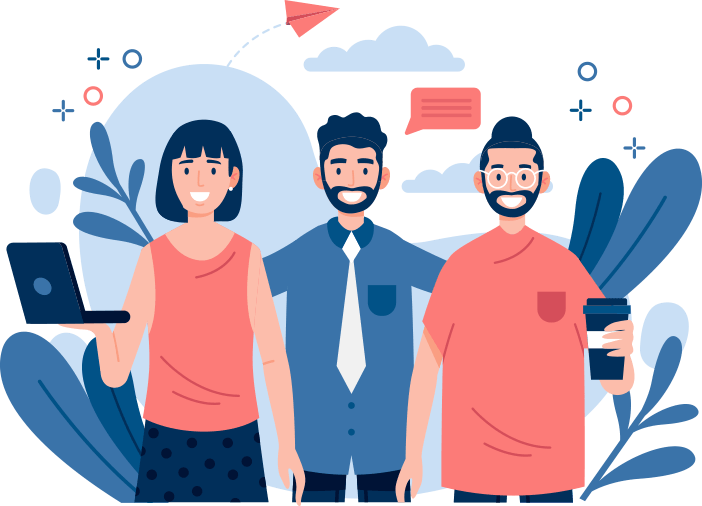
Click the button to start reading
The Risks of Poor Collaboration in the Workplace
Collaboration is kind of an elusive concept. It’s often treated like something that employees have to figure out on their own or that it’s something that might benefit the company but isn’t really that important. However, it’s safe to say that fostering a collaborative environment is an effort worth making that will grant businesses a stunning return on investment, as well as increase employee satisfaction.
This became an even more pressing issue at the beginning of 2020 when businesses had to quickly rethink their processes and adapt to a work-from-home model.
In this blog post, we’ll take a closer look at the risks that come with poor collaboration and what businesses can do to encourage efficient teamwork.
Let’s dive right in.
Why collaboration matters
Creating an environment that encourages people to collaborate and speak their minds will invariably help your business grow at a higher pace. It helps bring the best out of people as well as keep them engaged and passionate; as a result, this helps yield innovative ideas that are then transformed into exciting opportunities.
A collaborative workspace also enables people to showcase their strengths and appreciate the expertise of others. Through this synergy, a team can achieve its maximum potential instead of siloing its efforts. Plus, collaboration has become even more relevant with the onset of the coronavirus pandemic that has ushered in a work-from-home model that caused a significant disconnect between people.
Efficient collaboration also makes people more independent and autonomous in the workplace—they require less management and oversight.
However, it’s essential to underline that the path towards a collaborative environment isn’t necessarily straightforward. Excessive collaboration is a double-edged sword, and it can seriously hinder productivity when done incorrectly. A Stanford study suggests that when people choose to work together, they experience a significant increase in their intrinsic motivation—the participants of the study spent over 60% more time on complicated tasks and showed more motivation and interest in tackling them.
On the other hand, when collaboration relies on excessive meetings and codependency, it can result in slower and less creative decision-making. Therefore, it’s essential to bear in mind that collaboration on its own isn’t a good thing; organizations should take a strategic approach towards enabling the “good kind” of collaboration.

The risks of poor collaboration
Failing to create a collaborative environment at work doesn’t just result in missing out on the benefits—it also comes with a wide array of disadvantages.
The inability to build a workplace conducive to teamwork often leads to a siloed and fractured workflow, which has rarely led to efficiency or productivity. What could have potentially been a group-oriented approach will shift to a self-centered one, where survival becomes the focus of every individual, as opposed to collective success.
This will often result in a variety of unhealthy tendencies, such as:
- Manager and team resistance to feedback and input. As a more siloed approach starts seeping into the corporate culture, entire teams will become intentionally isolated from the recommendations of adjacent departments.
- The “that’s not my job” mindset. A divided and disconnected environment will most likely foster a myopic view of one’s professional responsibilities and dissuade people from broader participation in business activities.
- Isolated knowledge flow. In a more siloed work environment, vital business information doesn’t flow through the entire company, creating unnecessary knowledge lag.

1. A lot of wasted time
Lack of collaboration will often lead to a disengaged and unaccountable workforce, which will naturally result in a lot of wasted time. Every minute lost on inefficient interactions will surely reflect in the company’s bottom line.
A team that is used to collaborating is a team that is on the same page about pretty much everything work-related—processes are smooth and seamless, everybody has access to essential information, and everyone has a clear understanding of a project’s priorities.
A disconnected and siloed work environment will most certainly result in duplicate work, which, again, results in decreased productivity and resources drained on things that could have otherwise been avoided.
2. Lack of innovation
Collaboration helps companies come up with innovative, out-of-the-box solutions. Teams that learn to work together can leverage diverse backgrounds and experiences, allowing them to surface unexplored perspectives. As people work together, it’s much safer to take calculated risks and experiment.
More importantly, a culture that fosters openness, diversity, and collaboration will only continue bringing down existing silos within the organization that has been preventing the spread of valuable information and blocking innovation.
3. Negative impact on morale and team cohesion
We spend a substantial part of our lives in the workplace, making it an essential facet of our wellbeing. Working in an isolated and toxically competitive environment isn’t exactly conducive to long-term satisfaction. If people aren’t happy at work, this will certainly deter them from supporting each other and collaborating towards common and business goals. People strive to find meaning in work, but this is hard to achieve when they can’t find people that will support them in their professional growth.
More importantly, research suggests that collaboration is imperative when it comes to mental wellbeing at work, which is why it’s critical for employers to work on building a collegial and supportive culture. There is no middle ground—business owners will either invest time and effort into ensuring collaboration or suffer from the consequences of a disbanded and disjointed workforce.
4. Low employee engagement
Engaged employees are productive employees. They tend to want to perform better and are typically inclined to work within an organization for longer. Ensuring that your workspace is a collaborative environment will help the people in your organization to be more accountable and engaged.

Four ways to improve collaboration in the workplace
Now that we’ve explored the shortcomings of a workspace that lacks collaboration let’s take a quick look at a few ways businesses can tackle this issue.
1. Devise a clear strategy for collaboration
Outlining a strategy that will enable collaboration in your company is essential when it comes to getting the entire crew on board. Failing to turn this into a systematic effort will only result in partial engagement from your employees.
More importantly, having a structured approach will only underline the leadership’s commitment to creating a collaborative environment, which will, in turn, enable employees to do their part in the process.
Bear in mind that before you should have a well-thought-out collaboration strategy in place before you spend any amount of resources on specific tools and activities. Furthermore, the strategies designed to enable collaboration should be reviewed and optimized once or twice a year.
2. Identify barriers
Organizations are different—they have a variety of the ultra-specific ins and outs, which means that the strategy towards enabling collaboration should reflect these peculiarities. Start by asking yourself what is holding back the people in your organization from working together. Is the problem rooted in time, trust, tools, or a combination of the above?
To increase the chances of your strategy succeeding, consider running some company-wide research. Even simple things like surveys or questionnaires will provide you with a wealth of insight that will help you navigate the issues more effectively.
3. Strengthen your strategy with clarity
Having a clear purpose in regards to your collaboration strategy will, in part, define its success. Approach it the same way you would approach KPIs—they should be SMART. Your purpose should be specific, measurable, achievable, realistic, and anchored within a timeframe.
Your teams won’t be able to successfully collaborate if they don’t have a clear understanding of why they have to do it. Providing people with unclear goals or no goals at all will only prevent them from reaching them.
4. Identify and reward collaboration
Simply asking your employees to collaborate and failing to recognize and reward the behavior you’re seeking to enable will seriously hinder your efforts. Identify what are the behaviors that define collaboration and show your appreciation when these behaviors take place.
Failing to ensure proper incentives and rewards will invariably act as a barrier to effective collaboration.

The bottom line
As we mentioned above, there is no middle ground between a collaborative workspace and a disbanded one. Organizations will either enjoy the benefits of a cohesive, tight-knit group of employees or suffer the consequences of a fractured one. Therefore, it’s essential to invest time and effort into identifying the signs that your team is failing to collaborate efficiently and devise a well-thought-out strategy towards enabling people to work together.
Doing so will considerably improve the productivity and efficiency within your company, help retain talent, and foster innovative thinking.
















